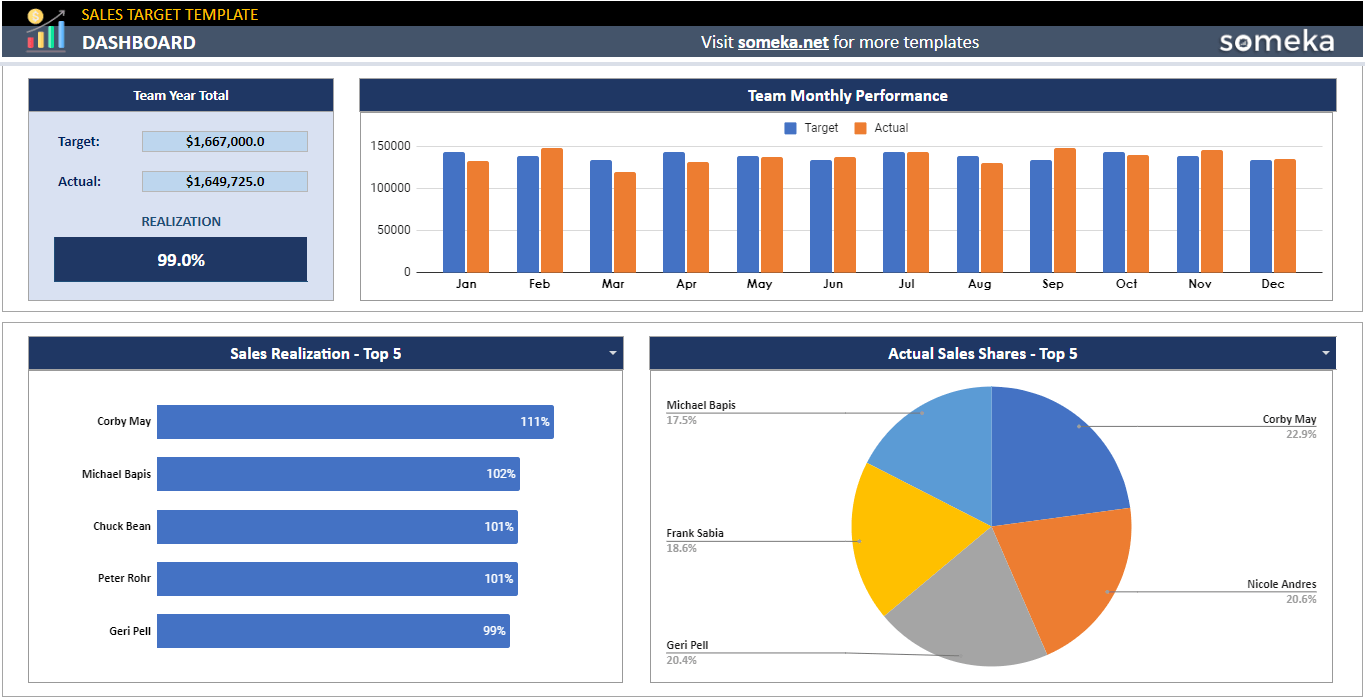BYD's Aggressive International Sales Target: 50% By 2030

Table of Contents
BYD, the Chinese automotive giant, has set an ambitious goal: to achieve 50% of its total sales from international markets by 2030. This aggressive target represents a significant shift in the company's strategy and poses a considerable challenge to established players in the global automotive industry. This ambitious plan signifies BYD's commitment to becoming a major force in the global EV market and directly impacts the future landscape of electric vehicle sales. This article delves into the factors driving BYD's expansion, the challenges it faces, and the potential impact on the global EV market.
BYD's Current Global Footprint and Market Position
Strong Domestic Presence
BYD's dominance in the Chinese EV market is undeniable. It consistently ranks among the top EV manufacturers in the country, boasting a diverse product portfolio that extends beyond passenger cars to include electric buses and trucks. This diversified approach allows BYD to capture a larger share of the overall market and provides a strong foundation for international expansion. BYD's technological advantages, particularly in battery technology, give them a competitive edge. Their vertically integrated manufacturing process, controlling everything from battery production to vehicle assembly, also contributes to their success and cost-effectiveness.
Initial International Successes
BYD has already made inroads into several international markets. Europe, in particular, has seen significant traction, with successful model launches and growing sales figures. Similarly, BYD is gaining momentum in South America and other regions. The success of models like the Atto 3 and Tang EVs in these markets indicates a growing appetite for BYD's offerings.
- Market share in key regions: While still relatively small compared to its domestic market share, BYD is steadily increasing its presence in Europe, with double-digit growth reported in several countries. Similar growth is seen in other target regions.
- Successful model launches in international markets: The Atto 3 compact SUV and the Tang SUV have proven particularly popular, demonstrating BYD's ability to adapt its vehicles to meet the demands of diverse markets.
- Partnerships and collaborations contributing to international growth: Strategic collaborations with local distributors and charging infrastructure providers are vital for expanding into new territories.
Strategies for Achieving the 50% International Sales Target
Product Diversification
BYD's strategy isn't limited to passenger cars. Offering a wide range of EVs, including buses and commercial vehicles, allows them to tap into various market segments and reduce reliance on any single product line. This diversification minimizes risk and maximizes revenue potential.
Technological Innovation
BYD's Blade Battery technology is a key differentiator, offering superior safety, energy density, and range compared to traditional lithium-ion batteries. This innovation, along with other technological advancements in areas like electric motors and power electronics, gives BYD a significant competitive edge in the global EV race.
Strategic Partnerships and Investments
BYD is actively forging strategic partnerships with local distributors, charging infrastructure providers, and governments in its target markets. These partnerships are crucial for navigating local regulations, establishing reliable supply chains, and building consumer trust. Investments in local infrastructure, such as charging stations, are also key to enhancing the appeal of BYD EVs.
Aggressive Marketing and Branding
Building brand recognition and consumer trust internationally requires a robust marketing and branding strategy. BYD is investing heavily in marketing campaigns tailored to specific regional preferences, emphasizing the quality, safety, and technological superiority of its EVs.
- Investment in R&D and new technologies: BYD continues to invest heavily in research and development, ensuring it remains at the forefront of EV technology.
- Details of key partnerships: Specific examples of collaborations with leading companies in various regions highlight BYD's commitment to strategic alliances.
- Marketing campaigns and brand-building initiatives: Targeted advertising and public relations efforts showcase BYD's commitment to building a strong international brand.
Challenges and Risks in Reaching the Target
Competition from Established Automakers
BYD faces intense competition from established automakers like Tesla, Volkswagen, and others, all vying for market share in the rapidly growing global EV market. These established players have extensive brand recognition, well-developed distribution networks, and significant resources.
Supply Chain and Logistics
Managing a global supply chain presents logistical challenges. Securing sufficient raw materials, ensuring timely manufacturing, and efficient transportation across international borders are critical factors for success. Disruptions in the global supply chain could significantly impact BYD's production and sales.
Regulatory and Political Factors
Navigating the varying regulations and political landscapes in different countries poses a considerable challenge. Differing emission standards, import tariffs, and government incentives can significantly impact BYD's competitiveness in individual markets.
Consumer Perception and Brand Awareness
Overcoming any negative perceptions associated with Chinese brands and building strong brand awareness in new markets requires time and investment. Consumer trust is crucial, and BYD needs to demonstrate the quality and reliability of its products consistently.
- Specific examples of competitive pressures: Detailed analysis of competitive strategies employed by Tesla and other major players provides context for the challenges BYD faces.
- Potential supply chain disruptions: Examination of potential risks, including geopolitical instability and material shortages, demonstrates the importance of supply chain resilience.
- Regulatory hurdles in key markets: Specific examples of regulatory hurdles in various markets highlight the complexity of navigating international regulations.
Conclusion
BYD's ambitious goal of reaching 50% international sales by 2030 is a monumental task in the fiercely competitive global automotive market. While significant challenges exist, BYD's strong domestic position, technological prowess, and strategic partnerships position it favorably to make substantial progress. The success of this aggressive international sales target hinges on overcoming competitive pressures, effectively managing complex global supply chains, and fostering strong consumer trust and brand awareness. The coming years will be pivotal in determining whether BYD can achieve its ambitious goal and reshape the global landscape of the electric vehicle industry. Learn more about BYD's innovative electric vehicles and their impact on BYD's international expansion and the global EV market. Explore the future of electric mobility with BYD!

Featured Posts
-
 Megan Thee Stallion And Tory Lanez Examining The Allegations Of Deposition Interference
May 13, 2025
Megan Thee Stallion And Tory Lanez Examining The Allegations Of Deposition Interference
May 13, 2025 -
 Romska Glasbena Tradicija V Prekmurju Muzikanti In Njihova Vloga
May 13, 2025
Romska Glasbena Tradicija V Prekmurju Muzikanti In Njihova Vloga
May 13, 2025 -
 Barnli I Lids Una Ted Povratok Vo Premier Ligata
May 13, 2025
Barnli I Lids Una Ted Povratok Vo Premier Ligata
May 13, 2025 -
 Crews Comeback Victory 2 1 Win Over Earthquakes
May 13, 2025
Crews Comeback Victory 2 1 Win Over Earthquakes
May 13, 2025 -
 Legal Battle Megan Thee Stallions Motion For Sanctions Against Tory Lanez
May 13, 2025
Legal Battle Megan Thee Stallions Motion For Sanctions Against Tory Lanez
May 13, 2025
Latest Posts
-
 Ohtanis Late Game Power Fuels Dodgers Comeback Win Against Diamondbacks
May 14, 2025
Ohtanis Late Game Power Fuels Dodgers Comeback Win Against Diamondbacks
May 14, 2025 -
 Dodgers Defeat Diamondbacks In High Scoring Affair Ohtanis Heroics Decide It
May 14, 2025
Dodgers Defeat Diamondbacks In High Scoring Affair Ohtanis Heroics Decide It
May 14, 2025 -
 14 11 Thriller Ohtanis Blast Powers Dodgers Win Over Diamondbacks
May 14, 2025
14 11 Thriller Ohtanis Blast Powers Dodgers Win Over Diamondbacks
May 14, 2025 -
 Dodgers Rally Past Diamondbacks Ohtanis Late Homer The Key
May 14, 2025
Dodgers Rally Past Diamondbacks Ohtanis Late Homer The Key
May 14, 2025 -
 Ohtanis 6 Run 9th Inning A Defining Moment In Dodgers Comeback
May 14, 2025
Ohtanis 6 Run 9th Inning A Defining Moment In Dodgers Comeback
May 14, 2025
